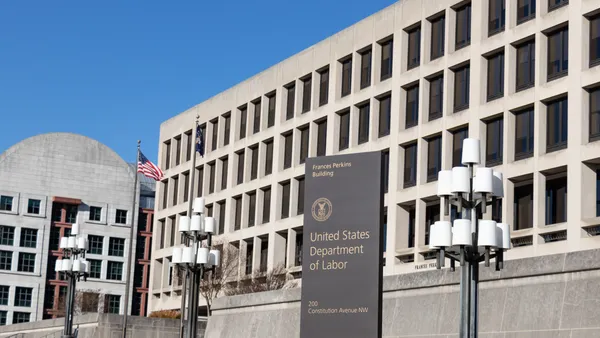Broc Romanek is editor of RealTransparentDisclosure.Com and chair of the Transparency Scientific Committee that oversees the annual Labrador U.S. Transparency Awards. Views are the author’s own.
Over the course of my 35-plus year career, I’ve often been asked about the difference between good corporate disclosure and bad corporate disclosure. The answer is simple: transparency. Of course, that raises additional questions: what is transparency and how can general counsel help improve it?
Transparent disclosure
Transparency is a mindset. It requires a commitment from the top down and across the organization. The general counsel plays a role in improving corporate disclosure and it is a real opportunity for them to help enhance the company’s value because transparent disclosure is good for business.
Stakeholders of all kinds – from investors to customers to employees – want to know they can trust a company, and the question has urgency for them as climate, social justice and geopolitical concerns increase. By making your disclosures transparent, you position your customers, communities, regulators and investors to answer that question positively.

These stakeholders want to know that companies are evaluating their risk and opportunities, especially in connection with environmental, social and governance issues, establishing and meeting goals and metrics, implementing sustainable business strategies and committing to regular reporting using appropriate frameworks. The challenge for legal teams is to ensure this reporting is transparent, consistent, accurate and responsive to the ever-changing landscape for litigation risk, especially for ESG.
Greater transparency makes the company a sound long-term investment. Compliance-only disclosure, limited to what is mandated by regulatory frameworks and accounting standards, can’t be counted on to give investors what they need to make thoughtful decisions.
The practice of transparency has evolved to the point where we have a set of universally recognized techniques that can be applied to measure the transparency of information objectively. That’s why Labrador, a global communication firm specializing in corporate disclosure, created its Transparency Scientific Committee, a group of current and former institutional investors, proxy advisors, in-house practitioners, regulators and quasi-regulators whose goal is to elevate the transparency of U.S. corporate disclosure.
The group has created and each year updates a set of several hundred objective criteria to assess how the S&P 250 is faring with their corporate reporting by evaluating each company’s SEC filings, ESG report and investor relations website.
Transparent disclosure in proxy statements
Executives say they want examples of good disclosures and good practices. A report prepared by Labrador based on findings from its 2023 transparency awards gives an indication of what good transparency looks like among the S&P 250:
- The proxies average 103 pages
- 14% provide an interactive version with links to navigate to and from sections of the document, including table of contents, up from 8% in 2021
- 48% have a table of contents that is one-page and includes two levels of hierarchy
As proxy statements expand in content and stakeholder readership broadens, easy navigation is critical to allow readers to skip to topics of particular interest. Availability of documents in interactive formats can assist the digital reader, and simple tables of content provide direction within the document.
The general counsel’s role is to keep disclosure easy to read and as clear as possible even as the level and complexity of the disclosure increases. This is not easy to do, especially as ESG issues, cybersecurity oversight and other new disclosures make their way into the proxy statement.
Leadership letters
Most disclosures in the proxy statement center around the Board of Directors, including its composition, oversight, governance structure and processes, selection of auditors and approval of executive compensation.
Accordingly, highlights and themes of the proxy are best presented by, and in the words of, the board. We see this in the results of the transparency awards:
32% include an introductory letter providing an overview of the board’s priorities and focus areas from either independent board leadership or the full board. This is a trend that started about a decade ago to mimic the letter from the CEO typically included in the glossy annual report or Form 10-K and the trend has picked up steam as the importance of the proxy statement increases.
Of these letters, 12% were from the CEO, 34% from the CEO also holding the chairman title, 26% from the lead independent director, 17% from the CEO-chairman and lead independent director and 8% from the board as a whole, an increase from 5% in 2022.
These letters offer a valuable opportunity for legal to contribute by ensuring the communication is as transparent as possible and by giving investors more of a window into how the board functions.
Transparency champions
With stakeholders continuing to ask about good disclosures, general counsel should engage with their board and CEO about the appropriate information to include in the proxy statement and other reports for greater transparency.
It is imperative to ensure messaging is accurate, appropriate and consistent across all reports, a job which often falls to legal as the ultimate reviewer of corporate disclosure to minimize litigation risk.
Transparency isn’t easy, but it’s doable. It requires real commitment, real effort. It needs an internal champion and the general counsel can play that role. If a company is not transparent, it may well have decided it does not want to be. But that’s at odds with what stakeholders want. They want transparency and they want it consistently, not on an ad hoc basis. Not just when times are good.










